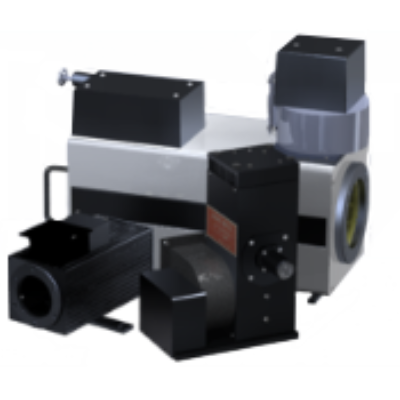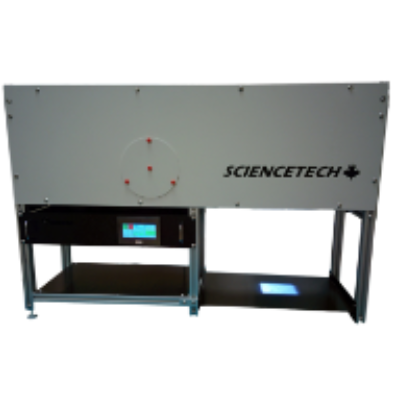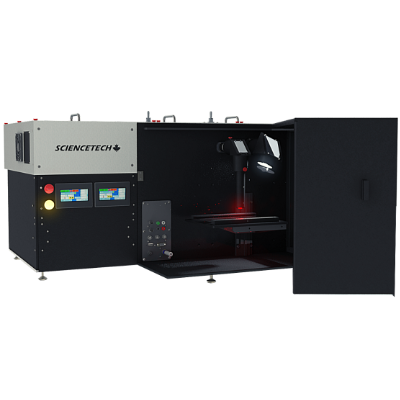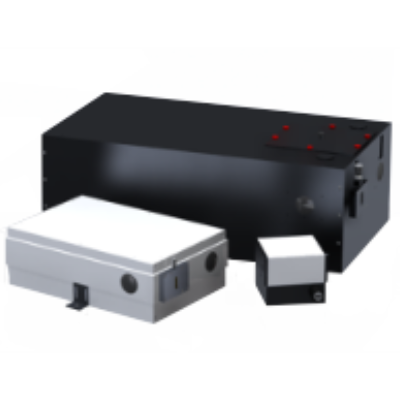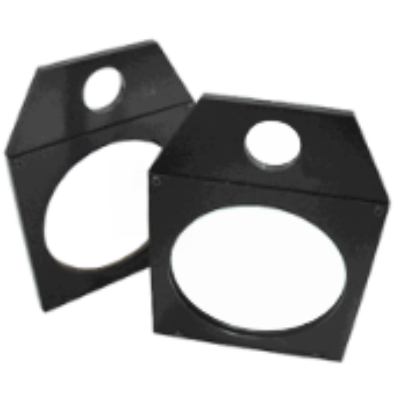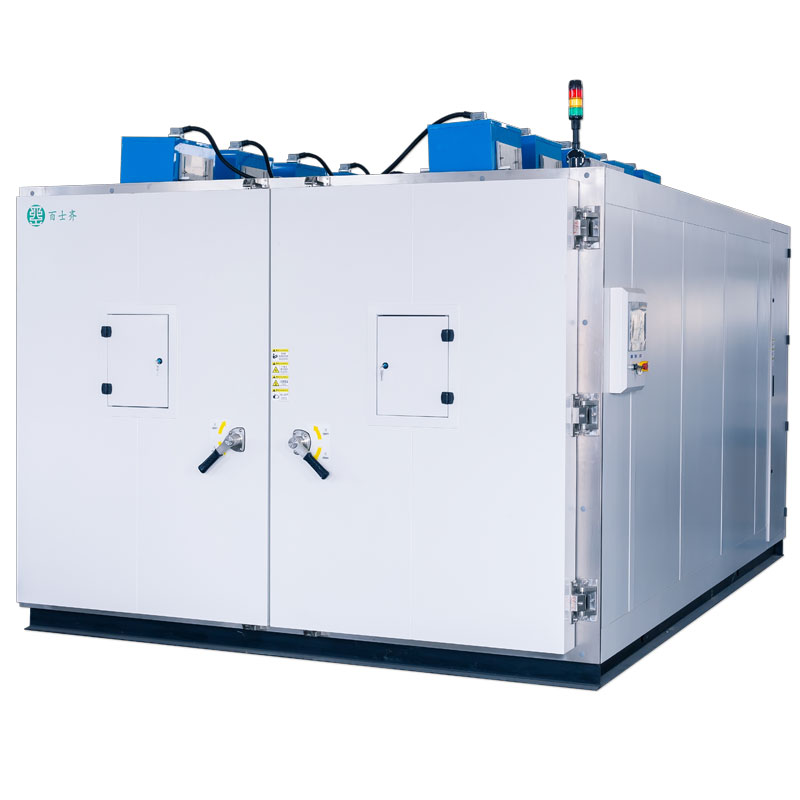Monochromator: Fundamental Principle and Methods
A comprehensive guide to Monochromator System: Understanding the essentials
What is a Monochromator?
A monochromator is an optical device that converts polychromatic light (such as sunshine or light from a lamp) into a range of individual wavelengths (monochromatic light) and allows a a limited band of these individual wavelengths to be chosen. The light in the desired wavelength band is then directed at a sample, detector, or other optical system components.The name is derived from the Greek roots "mono-" and "chroma-" refer to "single" and "color" respectively.
Principle of a monochromator
Here's a simple description of how a monochromator works:
Light Source: This device receives light from a source, which can be a lamp, laser, or any other light-emitting device. Collimation: The incoming light is collimated, meaning it is made parallel using lenses or mirrors. This step is crucial for accurate wavelength selection. Dispersive Element: The collimated light then passes through a dispersive element, such as a prism or diffraction grating. This element separates the light into its component wavelengths(colors) by bending different wavelengths at different angles. Selection: A narrow slit is used to select the desired wavelength. By adjusting the angle of the dispersive element, different wavelengths can be directed through the slit.Output: The selected wavelength exits the monochromator through an output slit, providing a beam of nearly monochromatic light.

Here's a simple description of how a monochromator works:

Figure 1.1. Diagram of a monochromator's components and how it works to obtain only the green beams of an incoming light
Resolution
The resolution of a monochromator refers to is ability to distinguish between two closely spaced wavelengths. This is typically expressed as the Full Width at Half Maximum (FWHM) of the instrument's spectral line profile.
Several factors influences the resolution of a monochromator:
Slit Width: Narrow slits provides higher resolution but reduce the amount of light passing through
Dispersion: This describes how well the monochromator spreads out different wavelengths. Higher dispersion improves resolution.
Grating or Prism Quality: The precision and quality of the diffraction grating or prism used in the monochromator also affect resolution.
Focal length of the Optical Components: Longer focal lengths provides better resolutions

Figure 2.1 Peak Intensity and FWHM Analysis
In a Czerny-Turner monochromator, the resolution can be theoretically determined by multiplying the reciprocal dispersion of the grating by the slit width.
The resolution of a monochromator refers to is ability to distinguish between two closely spaced wavelengths. This is typically expressed as the Full Width at Half Maximum (FWHM) of the instrument's spectral line profile.
Several factors influences the resolution of a monochromator:
Slit Width: Narrow slits provides higher resolution but reduce the amount of light passing through
Dispersion: This describes how well the monochromator spreads out different wavelengths. Higher dispersion improves resolution.
Grating or Prism Quality: The precision and quality of the diffraction grating or prism used in the monochromator also affect resolution.

In a Czerny-Turner monochromator, the resolution can be theoretically determined by multiplying the reciprocal dispersion of the grating by the slit width.
Design Requirements
Versatility: The monochromator should be able to span several wavelengths for various purposes.
High Transmittance: It should have high transmittance withing the pass band to ensure efficient light throughput.
Strong Attenuation: The device must strongly attenuate light outside the desired wavelength range to minimize noise and improve accuracy.
Adjustable Bandwidth: The ability to adjust the bandwidth of the pass band can be useful for various applications
Alignment Independence: The center wavelength should be independent of the direction or alignment of the input beam to maintain consistency
Compact and Robust Design: Ensuring the monochromator is both compact and robust can enhance its usability and durability.
Resolution and Dispersion: High resolution and appropriate dispersion are crucial for accurately isolating narrow portions of the light spectrum.
Mechanical and Thermal Stability: Stability in these aspects ensures reliable performance over time
Versatility: The monochromator should be able to span several wavelengths for various purposes.
High Transmittance: It should have high transmittance withing the pass band to ensure efficient light throughput.
Strong Attenuation: The device must strongly attenuate light outside the desired wavelength range to minimize noise and improve accuracy.
Adjustable Bandwidth: The ability to adjust the bandwidth of the pass band can be useful for various applications
Alignment Independence: The center wavelength should be independent of the direction or alignment of the input beam to maintain consistency
Compact and Robust Design: Ensuring the monochromator is both compact and robust can enhance its usability and durability.
Resolution and Dispersion: High resolution and appropriate dispersion are crucial for accurately isolating narrow portions of the light spectrum.
Mechanical and Thermal Stability: Stability in these aspects ensures reliable performance over time
Types of Monochromators
There are two types of monochromators based on the diffraction device used: grating monochromators and prism monochromators.
Grating Monochromators or Diffraction Gratings
In these monochromators, diffraction is carried out by a diffraction grating, which is a flat surface with numerous parallel and identical grooves. For example, a grating for ultraviolet light has between 300 and 2,000 grooves per millimeter.
The light coming from the collimating mirror falls on the slots of the gratings and is broken down into radiations of different wavelengths, which emerge from the gratings at different angles.
A control mechanism is used to modify the inclination of the grid to make the light of the desired length fall on the exit slit.
In these monochromators, diffraction is carried out by a diffraction grating, which is a flat surface with numerous parallel and identical grooves. For example, a grating for ultraviolet light has between 300 and 2,000 grooves per millimeter.
The light coming from the collimating mirror falls on the slots of the gratings and is broken down into radiations of different wavelengths, which emerge from the gratings at different angles.
A control mechanism is used to modify the inclination of the grid to make the light of the desired length fall on the exit slit.
Prism Monochromator
An optical prism can refract sunlight into the colors of the rainbow. When light strikes the face of a prism, it is refracted at an angle relative to the air-glass interface of the prism, with the refraction being dependent on the index of the refraction.
Furthermore, the refractive index depends on the wavelength of the light. This causes the white light incident on a prism to be broken down into different wavelengths, corresponding to different colors.
A control mechanism causes the desired light from the prism to fall on the exit slit of the monochromator.
An optical prism can refract sunlight into the colors of the rainbow. When light strikes the face of a prism, it is refracted at an angle relative to the air-glass interface of the prism, with the refraction being dependent on the index of the refraction.
Furthermore, the refractive index depends on the wavelength of the light. This causes the white light incident on a prism to be broken down into different wavelengths, corresponding to different colors.
A control mechanism causes the desired light from the prism to fall on the exit slit of the monochromator.
Monochromator's Application
The monochromator is utilized in a wide range of optical devices and instruments in education, research, and therapeutic settings.
Spectrophotometer
Monochromators are present in spectrophotometers, devices that are used in laboratories for different purposes; for example, in determining the activity of different enzymes, in the concentration of metabolic substances, in the concentration of macromolecules, etc.
The monochromator supplies light of a certain wavelength that is specifically absorbed by a substance, and its concentration can thus be determined due to a relationship between the concentration of the substance and its absorption of light.
For this purpose, a calibration curve is constructed, based on the Beer-Lambert Law. Light absorption can be expressed as transmittance, indicating 100% transmittance when light is not absorbed by the substances. Meanwhile, a lower transmittance when light is not absorbed by the substances. Meanwhile, a lower transmittance will indicate light absorption.
Spectrofluorometer
There are substances that are capable of emitting florescence, the concentration of which can be obtained using a spectrofluorometer.
This device has two monochromators: one is used to excite a substance, allowing the substance to emit fluorescence; and the other allows the fluorescence produced to be used to determine, the concentration of the substance being examined.
Circular Dichroism Spectrophotometer
This device, used in the investigation of the behavior of biological macromolecules, is equipped with a monochromator. Circular dichroism is used, among other studies: in the determination of the secondary structure of proteins, the conformation of proteins, and their chemical or thermal denaturation.
Microplate Reader
It determines the fluorescence of biochemical or immunological processes that occur in the concavities of the microplates, therefore resorting to the use of a monochromator.
The technique called ELISA is frequently used in the quantification of proteins, nucleic acids, enzymatic activity assays, as well as in numerous immunological procedures.
The monochromator is utilized in a wide range of optical devices and instruments in education, research, and therapeutic settings.
Monochromators are present in spectrophotometers, devices that are used in laboratories for different purposes; for example, in determining the activity of different enzymes, in the concentration of metabolic substances, in the concentration of macromolecules, etc.
The monochromator supplies light of a certain wavelength that is specifically absorbed by a substance, and its concentration can thus be determined due to a relationship between the concentration of the substance and its absorption of light.
For this purpose, a calibration curve is constructed, based on the Beer-Lambert Law. Light absorption can be expressed as transmittance, indicating 100% transmittance when light is not absorbed by the substances. Meanwhile, a lower transmittance when light is not absorbed by the substances. Meanwhile, a lower transmittance will indicate light absorption.
Spectrofluorometer
There are substances that are capable of emitting florescence, the concentration of which can be obtained using a spectrofluorometer.
This device has two monochromators: one is used to excite a substance, allowing the substance to emit fluorescence; and the other allows the fluorescence produced to be used to determine, the concentration of the substance being examined.
Circular Dichroism Spectrophotometer
This device, used in the investigation of the behavior of biological macromolecules, is equipped with a monochromator. Circular dichroism is used, among other studies: in the determination of the secondary structure of proteins, the conformation of proteins, and their chemical or thermal denaturation.
Microplate Reader
Optical Design Configurations
Seya-Namioka Monochromator
The Seya-Namioka configuration employs a holographic grating and two spherical mirrors to achieve precise wavelength selection and focusing. Light enters through an entrance slit and is directed onto the grating, which dispenses the light into its component wavelengths. The mirror, strategically placed within the Rowland circle, corrects for astigmatism and focuses the diffracted light into a sharp image at the exit slit.
For a Seya-Namioka monochromator with incident angle = α and diffracted angle ß, the angle between the incident and diffracted beam in the grating is α + ß = Φ

Figure 3.1. Seya-Namioka Monochromator Optics with Labelled AnglesThe grating equation is: mλ = d[sin(α)- sin(β)] where: m = diffraction order λ = wavelength d = separation between grooves in the grating Θ = grating angle with respect to the central monochromator axis α = incident angle with respect to the grating normal β = diffracted angle with respect to the grating normal
This equation can be rewritten as: mλ = 2 d cos(Φ/2)sin(Θ+Θo) where: Φ = α + β and Θ = grating angle .
For the specular reflection (zero order diffraction) to exit at the required position, the grating has to be at an angle Θo. In a symmetric monochromator Φ = 2A and Θo = 0.
Seya-Namioka Monochromator
The Seya-Namioka configuration employs a holographic grating and two spherical mirrors to achieve precise wavelength selection and focusing. Light enters through an entrance slit and is directed onto the grating, which dispenses the light into its component wavelengths. The mirror, strategically placed within the Rowland circle, corrects for astigmatism and focuses the diffracted light into a sharp image at the exit slit.
For a Seya-Namioka monochromator with incident angle = α and diffracted angle ß, the angle between the incident and diffracted beam in the grating is α + ß = Φ

For the specular reflection (zero order diffraction) to exit at the required position, the grating has to be at an angle Θo. In a symmetric monochromator Φ = 2A and Θo = 0.
Czerny-Turner Monochromator
The Czerny-Turner configuration of a monochromator is an optical design that combines spherical mirrors and a diffraction grating to effectively disperse and focus light. Light enters through a side entrance slit and is redirected by a plane entrance folding mirror at a 45-degree angle towards an entrance spherical mirror. This mirror collimates the light, making the beam parallel, and directs them to a diffraction grating. The grating disperses the collimated light into its component wavelengths. Depending on the angle of the grating, collimated beams of the required wavelength are reflected to an exit spherical mirror. This mirror focuses the light through the exit slit via another 45-degree plane exit folding mirror. Only the wavelengths within a specific bandwidth pass through the exit slit, providing the desired monochromatic light.
For a Czerny-Turner monochromator with an entrance angle = 2α an entrance angle and an exit angle 2β,the angle between the incident and diffracted beam in the grating is 2α + 2β = 2Φ

Figure 3.2. Czerny-Turner monochromator layout with labelled angles
The grating equation is: mλ = d[sin(2α + Θ )- sin(2β - Θ )]
where: m = diffraction order λ = wavelength d = separation between grooves in the grating Θ = grating angle with respect to the central monochromator axis (2α + Θ ) = incident angle with respect to the grating normal (2β - Θ ) = diffracted angle with respect to the grating normal
The grating equation can be rewritten as: mλ = 2 d cos(Φ)sin(Θ+Θo) where: Φ = α + β and Θo = α - β
For the specular reflection (zero order diffraction) to exit at the required position, the grating has to be at an angle Θo. In a symmetric monochromator Φ = 2α and Θo = 0. For an asymmetric monochromator (Θ ≠ 0).
The Czerny-Turner configuration of a monochromator is an optical design that combines spherical mirrors and a diffraction grating to effectively disperse and focus light. Light enters through a side entrance slit and is redirected by a plane entrance folding mirror at a 45-degree angle towards an entrance spherical mirror. This mirror collimates the light, making the beam parallel, and directs them to a diffraction grating. The grating disperses the collimated light into its component wavelengths. Depending on the angle of the grating, collimated beams of the required wavelength are reflected to an exit spherical mirror. This mirror focuses the light through the exit slit via another 45-degree plane exit folding mirror. Only the wavelengths within a specific bandwidth pass through the exit slit, providing the desired monochromatic light.

Figure 3.2. Czerny-Turner monochromator layout with labelled angles
The grating equation is: mλ = d[sin(2α + Θ )- sin(2β - Θ )]
Echelle Monochromator
An Echelle monochromator is a type of monochromator that consists of two dispersing elements: typically, a prism and a diffraction grating, known as the Echelle grating. The Prism is used in conjunction with the Echelle grating to disperse light into its component wavelengths. This combination allows for the separation and precise selection of wavelengths. When light hits the Echelle grating at a high angle of incidence, it gets diffracted at various angles depending on the wavelength and the diffraction order. The Echelle monochromator leverages these high-order diffractions to achieve very high spectral resolution. It is particularly useful in applications requiring high resolution and dispersion, such as emission spectroscopy.

Figure 3.3. Optical layout of Echelle Monochromator
An Echelle monochromator is a type of monochromator that consists of two dispersing elements: typically, a prism and a diffraction grating, known as the Echelle grating. The Prism is used in conjunction with the Echelle grating to disperse light into its component wavelengths. This combination allows for the separation and precise selection of wavelengths. When light hits the Echelle grating at a high angle of incidence, it gets diffracted at various angles depending on the wavelength and the diffraction order. The Echelle monochromator leverages these high-order diffractions to achieve very high spectral resolution. It is particularly useful in applications requiring high resolution and dispersion, such as emission spectroscopy.

Figure 3.3. Optical layout of Echelle Monochromator
Fastie-Ebert Monochromator
The Fastie-Ebert monochromator features a large spherical mirror and a plane diffraction grating. In this setup, part of the spherical mirror collimates the incoming light before it reaches the plane grating. The grating then disperses the light into its constituent wavelengths. This spherical mirror subsequently focuses this dispersed light, and the light in the desired wavelength band is directed to the detector or exit slit. This arrangement ensures high spectral resolution and precise wavelength separation, making it ideal for detailed spectroscopic measurements, but it exhibits some limitations in maintaining image quality due to system aberrations.

Figure 3.4. Optical layout of Fastie-Ebert Monochromator
The Fastie-Ebert monochromator features a large spherical mirror and a plane diffraction grating. In this setup, part of the spherical mirror collimates the incoming light before it reaches the plane grating. The grating then disperses the light into its constituent wavelengths. This spherical mirror subsequently focuses this dispersed light, and the light in the desired wavelength band is directed to the detector or exit slit. This arrangement ensures high spectral resolution and precise wavelength separation, making it ideal for detailed spectroscopic measurements, but it exhibits some limitations in maintaining image quality due to system aberrations.

Figure 3.4. Optical layout of Fastie-Ebert Monochromator
Types of configurations
Double Subtractive (DS) Monochromator Configuration
In a Double Subtractive (DS) monochromator configuration, two monochromators are positioned back-to-back in a subtractive mode, meaning the dispersion direction of the second monochromator opposes that of the first. The gratings in this setup rotate synchronously but in opposite directions. This design significantly reduces stray light, particularly when concave holographic gratings are used, making the DS configuration ideal for applications sensitive to stray light, such as Spectroradiometry, Raman spectroscopy, and UV measurements of solar radiation. The DS monochromator can function as either a tunable bandpass filter or a tunable notch filter. Additionally, it can pass or filter out multiple selected wavelengths by incorporating a custom intermediate multi-slit mask instead of a single-width intermediate slit.

Figure 4.1. 9030DS double subtractive monochromator optical layout
In a Double Subtractive (DS) monochromator configuration, two monochromators are positioned back-to-back in a subtractive mode, meaning the dispersion direction of the second monochromator opposes that of the first. The gratings in this setup rotate synchronously but in opposite directions. This design significantly reduces stray light, particularly when concave holographic gratings are used, making the DS configuration ideal for applications sensitive to stray light, such as Spectroradiometry, Raman spectroscopy, and UV measurements of solar radiation. The DS monochromator can function as either a tunable bandpass filter or a tunable notch filter. Additionally, it can pass or filter out multiple selected wavelengths by incorporating a custom intermediate multi-slit mask instead of a single-width intermediate slit.

Double Additive (DA) Monochromator Configuration
The Double Additive (DA) monochromator configuration consists of two monochromators arranged back-to-back in an addictive mode, where the dispersion of the second monochromator adds to that of the first. In this setup, the gratings rotate synchronously in the same direction. Incoming light is first dispersed by the initial grating, passes through an intermediate slit (which rejects stray light), and is then spectrally dispersed again by the second grating. This double dispersion results in improved optical resolution compared to a single monochromator, though the bandpass is reduced to half that of a single monochromator.

Figure 4.2. 9030DA double additive monochromator optical layout
The Double Additive (DA) monochromator configuration consists of two monochromators arranged back-to-back in an addictive mode, where the dispersion of the second monochromator adds to that of the first. In this setup, the gratings rotate synchronously in the same direction. Incoming light is first dispersed by the initial grating, passes through an intermediate slit (which rejects stray light), and is then spectrally dispersed again by the second grating. This double dispersion results in improved optical resolution compared to a single monochromator, though the bandpass is reduced to half that of a single monochromator.

Order Sorting Filters
Order sorting filters are essential components used in optical systems, particularly in diffractive equipment like monochromators, to manage and eliminate un wanted reflections from higher diffractive orders. When light passes through a diffraction grating, it can generate multiple diffracted beams corresponding to different diffraction orders (e.g., first, second, third, etc.). These higher-order beams can interfere with the desired output, leading to inaccuracies in measurements and spectral analysis.

Figure 5.1. Long pass filter. This filter typically blocks shorter wavelengths (in the UV region) and allow longer wavelengths (in the visible to near-infrared region) to pass through. Order sorting filters work by blocking these higher diffractive orders, such as the second and third orders, from reaching the detector. They are typically made from absorbing glass that selectively filters out the unwanted harmonics orders while allowing the desired wavelength to pass through. By incorporating these filters into the optical path, particularly before the light reached the detector, the system can maintain the purity of the selected wavelength, ensuring more accurate and reliable spectroscopic measurements.

Order sorting filters are essential components used in optical systems, particularly in diffractive equipment like monochromators, to manage and eliminate un wanted reflections from higher diffractive orders. When light passes through a diffraction grating, it can generate multiple diffracted beams corresponding to different diffraction orders (e.g., first, second, third, etc.). These higher-order beams can interfere with the desired output, leading to inaccuracies in measurements and spectral analysis.

Order sorting filters work by blocking these higher diffractive orders, such as the second and third orders, from reaching the detector. They are typically made from absorbing glass that selectively filters out the unwanted harmonics orders while allowing the desired wavelength to pass through. By incorporating these filters into the optical path, particularly before the light reached the detector, the system can maintain the purity of the selected wavelength, ensuring more accurate and reliable spectroscopic measurements.


